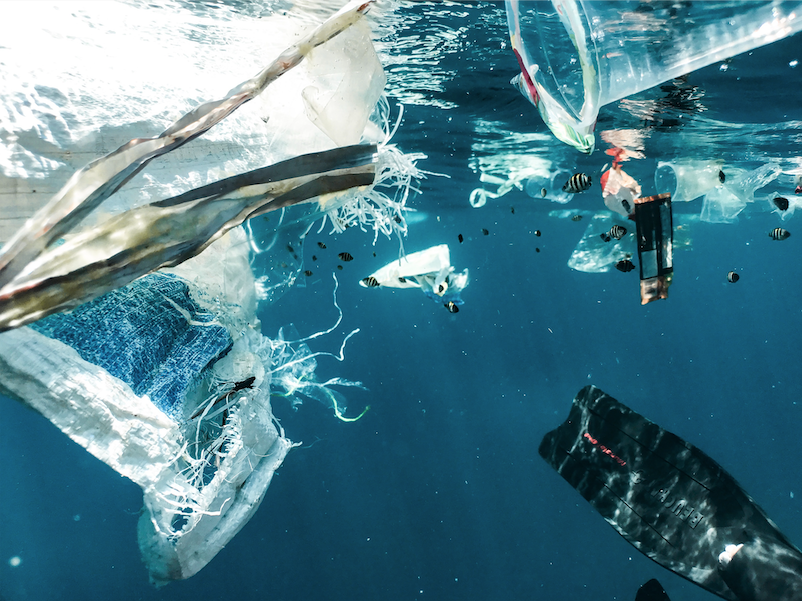In an ocean far, far away, 12.7 million metric tons of plastic a year are polluting our waters, littering our shores, killing marine animals and seabirds and contaminating ecosystems we’ve relied on for years. Straws are among the top 10 most common items found during cleanup events, and they serve as a symbol for other single-use plastics like grocery bags, cutlery and bottles, which are made to be immediately disposed of, serving their purpose for an average of only three minutes.
Single-use plastics are the product of a society hyper focused on convenience. Of course, there are plenty of important reasons when single-use plastic products are necessary (surgical gloves, masks, straws for people with disabilities, etc.), but those instances make up very little of the total amount of plastic ending up in landfills. Studies have estimated that 91 percent of all plastic isn’t recycled at all, and more than half of all plastic comes from the packaging of single-use plastic products.
All these statistics can be depressing as an individual, and it is important that we hold big corporations accountable for their overwhelming fault in this crisis, but there are actions you and I can take to be the new hope. We need to shift our mentality away from single use because it is not enough to just switch the materials if the intention of the product is to still be immediately disposed. Here are some ways you can make that shift:
Swapping to reusables
“Bringing your own” can save you money at the grocery store, coffee shops and other businesses that are eco-conscious. Bring your own mugs to coffee shops and breakfast outings—mugs can be great conversation starters, and there is nothing like drinking coffee from a mug. There are plenty of opportunities for reusable swaps in and out of the kitchen that include:
- Silverware and dishes
- Stainless steel water bottles
- Cloth napkins
- Hygiene products like silicone menstrual cups and cut up t-shirts to replace cotton pads and
- Washable mop and dusting pads
- Wool dryer balls instead of dryer sheets
- Silicone baking mats
- Razors
- Reusable K-cups
Repurposing single use to be multi-use
Yogurt containers are great options for reusable plastic containers, along with your curry takeout bowl. And, instead of buying designated poop bags, plastic grocery bags can be used to pick up after your dog. Avoiding single-use plastic is near impossible, so reusing them when possible is a great way to expand the lifetime of the product. This is also true of other single-use products that may be made with a different material. Just because it isn’t plastic, doesn’t mean it doesn’t come with an environmental cost.
Options for reusing:
- Gift bags
- Takeout containers
- Paper bags
- Glass jars
- Bread bags
- Plastic zippered bags
- Plastic cutlery
Shop smart
As consumers, our power comes from where we spend our money. Choosing to purchase goods that use minimal plastic packaging, can be recycled or reused easily and from companies you know are doing what they can to produce sustainable products can make a difference.
Some options for swaps at the store can include:
- Shampoo, conditioner and soap bars that don’t have plastic packaging (or refilling old containers with new product)
- Toothpaste tabs
- Laundry detergent in powder form
- Farmer’s market and other locally sourced foods that are in season
- Thrifting!
While it isn’t up to just you or me individually to solve the climate crisis, we can take small steps on our own to build better habits that support a greener future, collectively. Recognizing the role convenience has played in the productions of plastic products can help us build awareness that inspires real change. And as aware citizens, it’s our job to be the new hope.

(928) 523-4789 | McKenzie.McLoughlin@nau.edu



